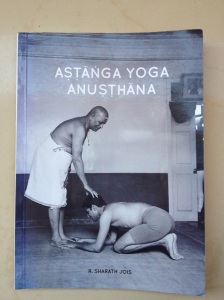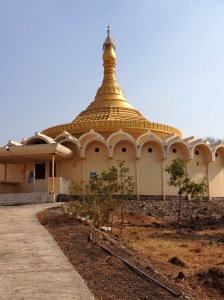
Pagoda containing meditation cells
Ever since I heard about Vipassana meditation I’ve wanted to try it out. The introductory courses consist of meditating ten hours a day for ten days at a time, in complete silence, with no reading, writing, physical exercise, contact with the outside world or even eye contact allowed. I relished the challenge and wanted to see how I’d cope, not only with the physical pain, but with the mental discipline too (or should that be anguish, or even torture?!)
I’d never gotten around to it in England, so when the opportunity arose to take a course in India – where Vipassana originates from – I jumped on it. The only dates I could find that matched my schedule were at a centre called Dhammalaya, near Kolhapur in Maharashtra, which just happened to be the same centre a fellow traveller had told me about, so I took this as a sign and applied straight away. She said the place was lovely, and she wasn’t wrong.
Exploring Dhammalaya

Prison cell block aka our rooms!
The Deccan Vipassana Research Centre, or Dhammalaya, is in a lovely rural setting surrounded by trees and hills. All the communal areas – the meditation hall, the dining hall, and even the arched stone structures housing the drinking water – are covered in colourful mosaic tiling, which is so simple and yet so beautiful. In the middle stands a stunning gold-spired pagoda full of meditation ‘cells’, which again is tiled in colourful mosaic work.
A small wooded area lies to one side, where I started taking short walks in the breaks and managed to spot peacocks, monkeys, bunny rabbits, bats and numerous species of birds – that is, until I got told off as it’s apparently out of bounds and full of snakes! Turns out the ‘walking track’ that appeared to lead into the woods just referred to a patch of gravel, and after doing gentle laps of it every day it started to feel a lot like a prison exercise yard! In fact, considering you’re not supposed to leave until the ten days are up, and the tiny individual meditation rooms are called ‘cells’, the prison analogy seems quite apt.
Daily Routine

Our strict daily schedule
Our days were super structured and there were lots of rules to follow. The morning bell would go at 4am and we’d be on our cushions by 4.30am ready for our first two-hour sit of the day. Then it was time for breakfast (much to the delight of our rumbling tums), which was usually some spicy local dish made from rice, pulses or grains (and occasionally idli as a special treat), plus strong, milky Indian tea (thankfully they offered a sugar-free version, otherwise my teeth would not have lasted) and a piece of fruit. Now, strictly speaking, only the old students are meant to have fruit at breakfast, with only the new students being allowed fruit at tea-time, but they seemed to bend the rules where this was concerned – which suited me just fine!
After breakfast we’d have about an hour’s rest when we could shower (Indian style, i.e. a bucket and scoop), do washing, go for a short walk (with the snakes, ahem) or just rest. I often took this opportunity to do a few stretches to ease my poor muscles, or else just do absolutely nothing at all – which is a very good practice for me I’ve found. The next three hours would be group or individual sittings and, from the third day, was the start of our adhittana (strong determination) sittings, where we’d have to sit in the same posture for one hour without moving or opening our eyes. I was amazed that I was able to do this straight away simply by following the method we’d been taught, which is based on observing all bodily sensations objectively and not thinking of them as pain or pleasure.
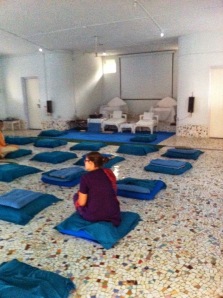
Women’s meditation hall
Lunch was at 11am – usually a substantial, delicious thali – followed by an hour and a half’s rest time. We then had another one hour adhittana session plus a further three hours of group or individual sittings. For me these were the hardest sessions, as I’d feel hot and sleepy after lunch and I often found it really hard to concentrate. The afternoons could really drag, but the light at the end of the tunnel was looking forward to the delicious tea-time snacks at 5pm! You don’t get dinner on a Vipassana retreat, but as new students we’d get tea, fruit and lots of delicious churmuri, a mixture of slightly curried puffed rice, chickpeas, peanuts, curry leaves and black mustard seeds. I’m not sure I would have survived without it!
Our third and final adhittana session of each day would be 6-7pm, after which we’d divide into different rooms to watch a videotaped discourse by the guru, S N Goenka, himself. These were provided in Hindi, English and even Russian, as there seemed to be quite a group of Russian-speaking students on the retreat. This type of division was very prominent throughout the course, as they made distinctions between men and women (who are always separated on Vipassana retreats to avoid distraction); old and new students (different rules apply to each); and locals and foreigners (different registration processes and language divisions).
I found Goenka to be a very gentle but determined, very inspiring and very lovely man, and was sad to discover he’d only passed away some six months before. His discourses were very thought provoking, often moving, and usually made complete sense. The technique of Vipassana meditation is actually very scientific, based on the science of mind and matter. I had no idea what to expect before I took the course, and was surprised to discover that it’s all based on bodily sensations. If we train our mind to observe first our breath and then all our bodily sensations objectively, with equanimity, we can learn to live without craving, aversion or ignorance.

Drinking water
As the Buddha realised, cravings and aversions are at the root of all our problems, as they create desire, greed, anger, frustration, fear and a whole host of other strong, unnecessary emotions. All our misery essentially comes from desire – desire for wanted things to happen or for unwanted things not to happen. If we can control this desire, by controlling our cravings and aversions, then we can be free from this misery. This is just the tip of the iceberg and the teachings obviously go into a lot more detail, but this is the essence of Vipassana, with a strong focus on anicca (impermanence), i.e. the natural law that everything changes. Nothing ever stays the same and we can experience this by observing our bodily sensations.
After watching the discourse we’d have one more short sit, a chance to speak to the teacher in private to ask questions about our practice, and then we’d finally collapse into bed at 9.30pm, ready to start all over again just six and a half hours later. For me the routine wasn’t that different to what I’m used to: getting up before sunrise to practice yoga, only having two main meals per day, and going to bed early – but I know some people found it very difficult to get used to. One thing I continued to find amusing every day was the ‘salad’ that one of the workers had mentioned at the time of registration, saying they’d included it as they know how us Westerners like to eat salad. I nearly burst out laughing when I discovered this meant a few old dried-up chunks of cabbage, carrot and cucumber! Whenever I ate it I could hear one of my friends back home saying sarcastically “Mmm, delicious salad!”
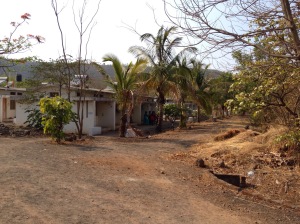
Female residential quarters
During the actual meditation sessions we’d hear the most wonderful sounds, especially at dawn and dusk – peacocks mewling to each other across the valley, geckos cackling both inside and outside the hall, bats screeching and all sorts of birds tweeting, chattering and cawing. There was also lots of chanting, gongs and bell-ringing coming from another temple nearby (which got rather confusing at times), and even some pumping dance music from the same temple! One afternoon there was a mini storm going on with thunder, lightning and deafening wind and rain on the roof of the hall, but by the time we got outside again it had completely passed over, everything was bone dry and there was no sign it had ever happened!
We’d also hear audio recordings at the beginning of many of the sessions, with Goenka chanting and giving us instructions and reminders about the techniques we should be practising. At times his voice became unbearably irritating but at others I found it incredibly reassuring and motivating. The chanting became so familiar and I can still hear his repetitive, melodious voice in my head… Anicca… Anicca… Anicca…!
Bringing the Practice to a Close

The beautiful main gong
On the last day we were able to break the vow of silence, which is something I found very odd and don’t think I was quite ready for. The retreat centre suddenly became a very different place and I felt like I was just another traveller again, sharing stories and experiences with others. It had been a very intense experience, which I’d shared with these 25 other women – both Indians and foreigners – but I could see how easy it would be to lose everything we’d just been learning and practising. Trying to use words to describe our experiences seemed futile and meaningless and by the end of the day I was amazed at how exhausted I felt from all the excitement, commotion and verbal activity.
Travelling back to the city of Kolhapur the following day was another level of weirdness for me. Suddenly we were back to the traffic, the busyness, the noise and the smells of typical India and I felt very discombobulated indeed. Some of my fellow Vipassana students were saying how different they felt – calmer, more peaceful, less stressed – but I seemed to be having the opposite experience. I’d been feeling very happy and contented when I started the retreat, after leaving the cosy bubble of Mysore; but when I came out I felt agitated and harassed and had to hide away in my hotel room for most of the day to recharge my batteries and come back to myself. Maybe the ‘recovery period’ that so many people seem to go through after leaving Mysore had been put on hold when I started the retreat and was only just showing itself now.

A gentle daily reminder
In any case, two and a half weeks later I just about feel ‘normal’ again, after two days of travelling from Kolhapur > Pune > Delhi > Bangkok > Chiang Mai; recovering from a hideous bout of food poisoning as soon as I got to Delhi (Delhi Belly quite literally); getting used to a new city, let alone a new country; and then getting immediately stuck into a five-week Thai massage course in Chiang Mai. Phew! The Vipassana feels a long time ago already, but I’m hoping I can retain some of the stillness and serenity and start to incorporate the practice into my daily life once things settle down. I have no doubt that a consistent daily practice would be incredibly beneficial both for myself and all those around me.
My Observations
These are some of the key things that struck me during the retreat:
-

Personalised plates, cups & spoons
There are many similarities between Vipassana and Ashtanga Yoga: the five Buddhist precepts are pretty much the same as Patanjali’s five yamas; you need a committed daily practice in order to start really noticing and appreciating the benefits of the practice; the practice will start changing your perspective and priorities in life; you have absolutely no idea what experience you’ll have each practice session until you get on the meditation cushion or yoga mat.
- With no men around, all the women covered in modest clothing and no scantily-clad yogis around, i.e. with no-one to compare myself to, I discovered a new-found love and appreciation for my own body.
- We weren’t allowed to wear any jewellery and had to dress modestly, covering our shoulders and knees as is customary for Indian women. I realised how much my jewellery is an expression of my personality, but not being able to wear it meant there were fewer differences between each of us and I started caring less about what other people thought of me. Not being able to speak to each other was also instrumental in this: without hearing anyone else’s words, tone of voice, or opinions, it became irrelevant what they thought as I was never going to know!
- One of the things I was most worried about was the physical pain of sitting in meditation for ten hours a day, but I was amazed at how quickly the numbness and pins & needles disappeared. I’m sure my daily yoga practice helped, and I’m not saying I didn’t have any pain at all, but it was much more manageable that I’d thought. The mental pain on the other hand….
- The passing of time became a very strange concept indeed. Days of the week and calendar dates no longer existed, there was just Day 1, Day 2, etc. Sometimes during meditation an hour would feel like an eternity and I’d be willing it to end; other times two hours would breeze by and suddenly we were heading towards the end of the course.
-
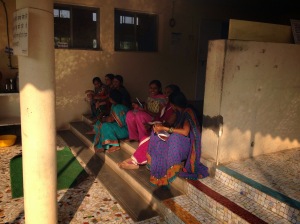
Breaking the noble silence
I found it fascinating watching my emotions, which were often very unexpected. One minute something hilarious would pop into my mind and I’d have to stop myself bursting into laughter; the next minute a wave of sadness would rise up from within me and I’d burst into sobs. Luckily this only happened in the cells but it was still a job to keep from disturbing anyone.
- I discovered I have something of a split personality. I seem to have these two voices in my head; one is like an unruly child, always talking, commentating or even singing along to whatever’s happening; the other is like a patient parent constantly trying to ‘sshhh’ it and calm it down. Is that normal or is it just me…?!
- I realised how much of a stickler I am for rules. If rules have been set there must be a reason for them, so I believe they should be followed, particularly somewhere that deserves the utmost respect, like on a meditation retreat. So it was interesting to notice my frustration when people turned up late for a sit, left the hall before the gong, or wore inappropriate clothing (much to the distaste of some of the Indian women I noticed). However, I didn’t seem to mind the disregard for the no-morning-fruit-for-new-students rule at all!
- The most important thing I think I’ll take away from the experience is something that I knew already on an intellectual level, but which somehow seemed to get driven home and made so much more sense to me during the course:
All our misery and happiness is created inside of us; it has nothing to do with anything or anyone outside of ourselves. We cannot control other people, we can only control how we react to them.
 For the fourth and final instalment of my food guide series, I take a look at the options for eating in whilst in Mysore, reviewing the best supermarkets, organic shops and fruit & veg stalls in and around Gokulam.
For the fourth and final instalment of my food guide series, I take a look at the options for eating in whilst in Mysore, reviewing the best supermarkets, organic shops and fruit & veg stalls in and around Gokulam.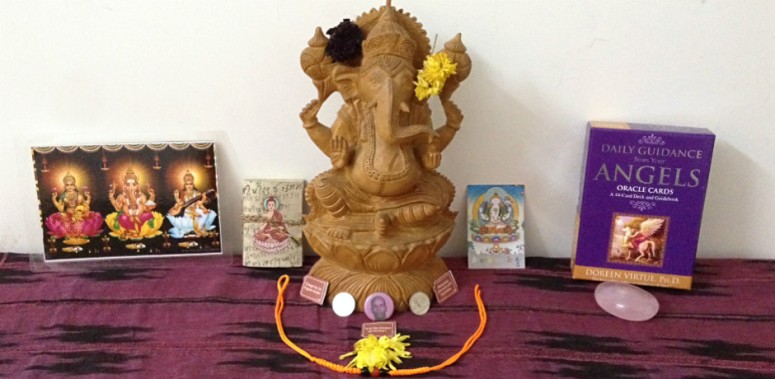 As we move into a brand new year this is a great opportunity to reflect back over our achievements and blessings, to consider what we want to let go of and to manifest our dreams and wishes for the year ahead.
As we move into a brand new year this is a great opportunity to reflect back over our achievements and blessings, to consider what we want to let go of and to manifest our dreams and wishes for the year ahead.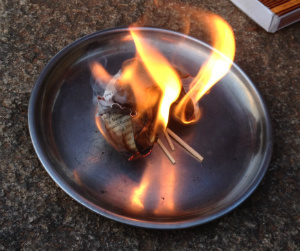 Read the full post here:
Read the full post here: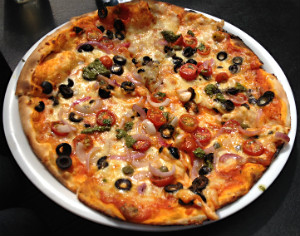 Following my previous guest posts for Ashtanga Brighton,
Following my previous guest posts for Ashtanga Brighton, 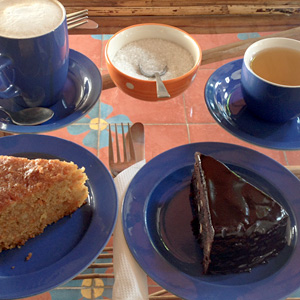 Following my previous guest post for Ashtanga Brighton,
Following my previous guest post for Ashtanga Brighton,  Having spent 3 months in Mysore at the beginning of this year, and having sampled just about every cafe and restaurant there is to sample, I thought it would be a good idea to share my thoughts and experiences so other people’s tastebuds can have as much fun as mine!
Having spent 3 months in Mysore at the beginning of this year, and having sampled just about every cafe and restaurant there is to sample, I thought it would be a good idea to share my thoughts and experiences so other people’s tastebuds can have as much fun as mine!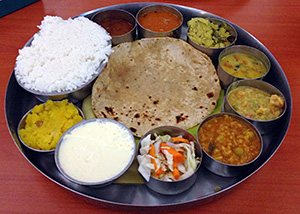 Check out the full blog post here:
Check out the full blog post here: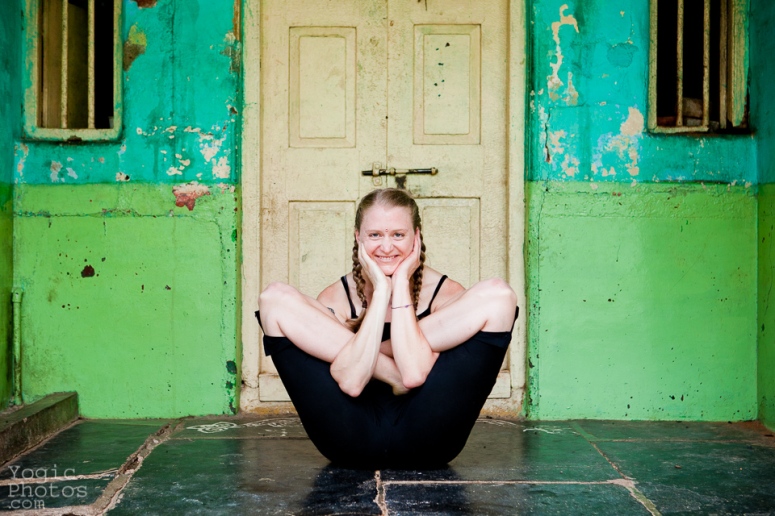


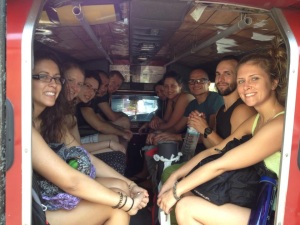
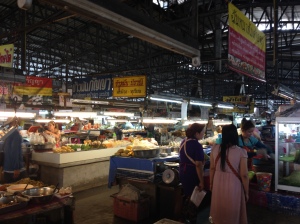
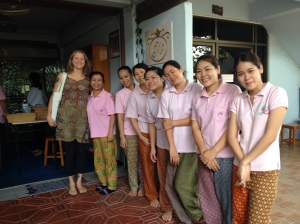
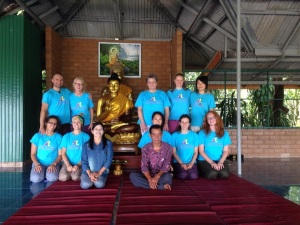

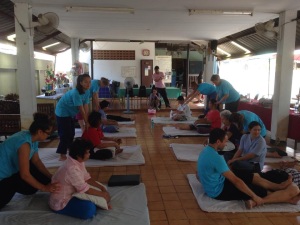

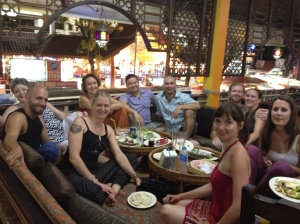
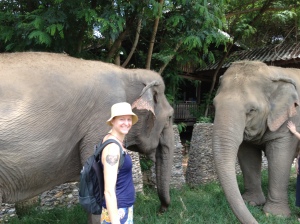
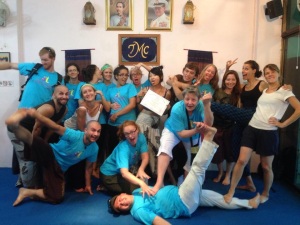











 This week it’s time to go deeper. I could tell you about the last kirtan of the season that descended into a surreal open mic session. Or about finally discovering the actual, official
This week it’s time to go deeper. I could tell you about the last kirtan of the season that descended into a surreal open mic session. Or about finally discovering the actual, official 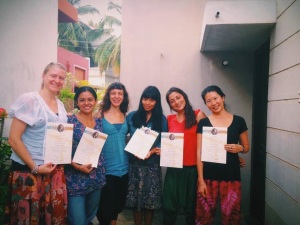
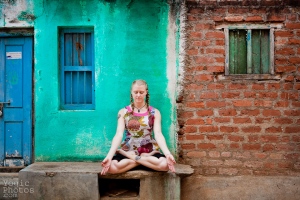 The messages are coming through loud and clear for me, as the same themes keep coming up again and again throughout these different exploratory mediums. Intellectually speaking, my rational mind knows what the issues are and how they impact me on a day-to-day basis, but I still struggle with how to resolve them, how to let them go, how to get over them and move on. One very poignant moment for me was during the intuition course. We were doing a meditative exercise where we were focussing on our deepest inner selves and I had this sudden feeling of dropping, as if I was literally dropping into my body, or into my soul. And then a message appeared, as clear as day, that said “You already have all the answers. You can stop searching now.”
The messages are coming through loud and clear for me, as the same themes keep coming up again and again throughout these different exploratory mediums. Intellectually speaking, my rational mind knows what the issues are and how they impact me on a day-to-day basis, but I still struggle with how to resolve them, how to let them go, how to get over them and move on. One very poignant moment for me was during the intuition course. We were doing a meditative exercise where we were focussing on our deepest inner selves and I had this sudden feeling of dropping, as if I was literally dropping into my body, or into my soul. And then a message appeared, as clear as day, that said “You already have all the answers. You can stop searching now.” Many people feel a strong connection when they visit Eastern or Asian countries, and consider places like India to be their spiritual home. I have a similar feeling after living in Mysore for 3 months. But I also feel like I’ve found my spiritual mother and father here. There are two people I’ve met who I’ve felt such a strong affinity with. You know sometimes when you meet someone you feel like you want to talk to them, to spend time with them, to just be near them or maybe to touch them, hug them and feel close to them? Well, that’s what I’ve experienced here. They both happen to be westerners who’ve spent a lot of time in India, and they’re both very inspirational teachers, speakers and healers. I’m so grateful to have met them, to have had the opportunity to spend time with them and learn from them, and I know I’ll be seeing them again sometime soon, somewhere in the world.
Many people feel a strong connection when they visit Eastern or Asian countries, and consider places like India to be their spiritual home. I have a similar feeling after living in Mysore for 3 months. But I also feel like I’ve found my spiritual mother and father here. There are two people I’ve met who I’ve felt such a strong affinity with. You know sometimes when you meet someone you feel like you want to talk to them, to spend time with them, to just be near them or maybe to touch them, hug them and feel close to them? Well, that’s what I’ve experienced here. They both happen to be westerners who’ve spent a lot of time in India, and they’re both very inspirational teachers, speakers and healers. I’m so grateful to have met them, to have had the opportunity to spend time with them and learn from them, and I know I’ll be seeing them again sometime soon, somewhere in the world.